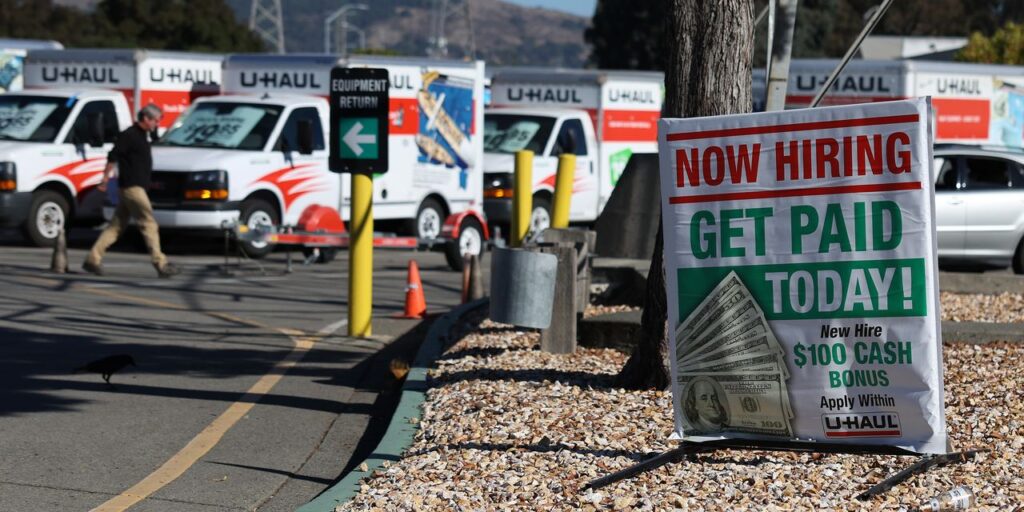A brawny U.S. jobs market might finally be showing a hint of flab.
One sign was the October employment report that showed the creation of just 150,000 new jobs — and fewer than 100,000 in the private sector. The unemployment rate also edged up to a 21-month high of 3.9%.
Another piece of evidence? A rising number of people collecting unemployment benefits. That could be a sign it’s getting harder to find a job.
The government on Thursday reported that so-called continuing jobless claims rose at the end of October to a seven-month high of 1.83 million. These claims reflect the number of unemployed workers who are collecting benefit checks.
“The upturn in continued claims suggests that … unemployed individuals are finding it more difficult to find new jobs, which would be consistent with a slower pace of hiring,” said lead U.S. economist Nancy Vanden Houten of Oxford Economics.
To be sure, the increase in continuing claims has been small and gradual. Even now they are lower than they were at the start of the pandemic in March 2020.
The recent rise in continuing claims appears to have been exaggerated by the government’s seasonal adjustments, economists point out.
The raw or actual number of people getting benefits is significantly lower and most of the increase has only taken place in the last month and a half.
Still, there are other signs of stress.
Take the exhaustion rate, which measures the percentage of people who use up all their jobless benefits. It’s risen to 35% from just under 30% at the end of 2022.
The length of time people collect benefits before finding another job has also risen slightly since the start of the year.
“The latest claims data provide further evidence of a modest margin of slack open in the labor market,” said Bill Adams, chief economist of Comerica Bank in Dallas.
The Federal Reserve wants to see a further softening of the labor market to help reduce the upward pressure on wages that are contributing to high U.S. inflation. Many senior Fed officials say they are seeing signs of exactly that.
“Firms are telling us that it’s easier to fill open positions than it was a year ago, and that wages are not rising as fast,” said Kathleen O’Neill Paese, interim president of the St. Louis Federal Reserve. “We’re also hearing from contacts that inflation pressures may be easing.”
Yet by virtually any measure, the U.S. labor market still has plenty of muscle.
The 3.9% unemployment rate is very low historically, for example, and even the 150,000 increase in new jobs in October would have been seen as a pretty good report before the pandemic.
Rising wages reflect the newfound leverage of labor, as evidenced by the United Auto Workers strike against the Big Three U.S. carmakers. Average hourly earnings have climbed 4.1% in the past year.
While annual wage growth has cooled from a pandemic-era peak of 5.9%, worker pay is still increasing notably faster than it did before the pandemic.
If the jobs market is really cooling off, however, wage growth should continue to slow and other signs of slack are sure to emerge.
“Everywhere you turn, there are signs that the labor market is slowing down as the expansion has grown very long in the tooth,” contended U.S. economist Thomas Simons of Jefferies.
Read the full article here











